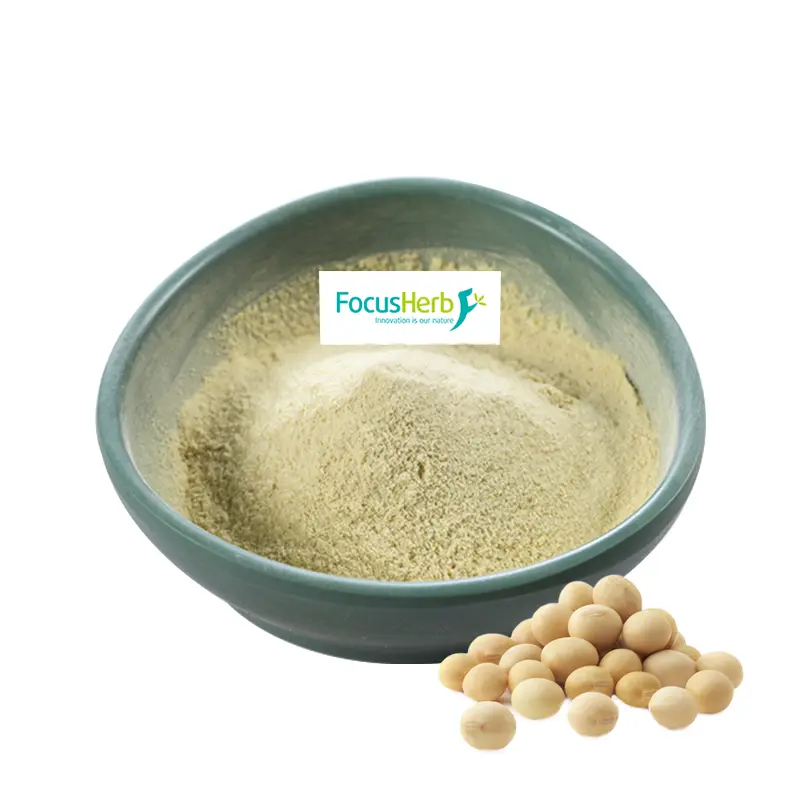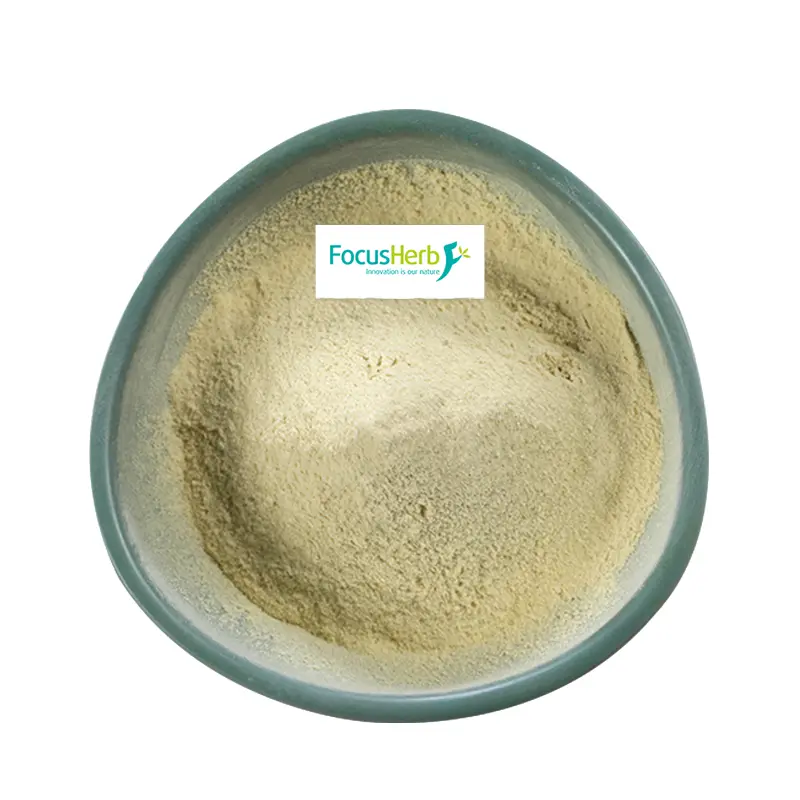Neurocognitive Empowerment: Reshaping the Brain’s Information Processing System
(I) Mechanisms of Memory and Cognitive Enhancement
Phosphoproline, a core phospholipid component of neuronal cell membranes, plays a crucial role in the brain’s memory and cognition. From a mechanistic perspective, it optimizes the transmission efficiency of neurotransmitters. Acetylcholine, an important neurotransmitter, plays a key role in information transmission during learning and memory. Phospholipid serine acts like a “traffic commander,” facilitating the smoother transmission of acetylcholine between nerve cells, thus directly participating in the consolidation of short-term memory and the retrieval of long-term memory.
Many clinical studies have confirmed the significant effect of phospholipid serine on memory enhancement. In an experiment involving different age groups, participants supplemented with 100-300mg of phospholipid serine daily. After a period of time, they underwent episodic memory tests, and the results showed a significant improvement in their performance. For school-aged children, learning new knowledge requires constantly converting short-term memory into long-term memory; phospholipid serine can help them complete this process faster and better, thereby improving learning efficiency. For the elderly, as they age, brain function gradually declines, and memory deteriorates significantly. Supplementing with phosphatidylserine can, to some extent, slow down this decline and help them better remember everyday moments.
Its lipophilic molecular structure is also a major advantage. This property allows it to easily penetrate the blood-brain barrier, like a “secret key” leading directly to the brain. Once inside, it targets and repairs synaptic connections, enhancing neuronal signal transmission speed by 20%-30%. Synapses, as key sites for information transmission between neurons, directly affect the brain’s memory and cognitive functions due to their stability and signal transmission speed. Phosphatidylserine repairs and strengthens synaptic connections, making “communication” between neurons more efficient, thus facilitating memory formation and retrieval.
(II) Attention and Brain Fatigue Regulation
In today’s fast-paced life, whether it’s high-intensity mental work or students facing heavy workloads, many often experience difficulty concentrating and brain fatigue. Phosphatidylserine demonstrates excellent performance in addressing these issues. It primarily works by regulating the activity of the hypothalamus-pituitary-adrenal (HPA) axis. When the body is under stress, the HPA axis is activated, leading to increased cortisol secretion. While moderate cortisol secretion helps the body cope with stress, prolonged high levels can negatively impact the brain, causing difficulty concentrating and accelerating the depletion of norepinephrine, a crucial substance for maintaining alertness and attention.
Phosphoprol acts as a “regulator” of the HPA axis, effectively reducing cortisol spikes under stress and decreasing excessive norepinephrine depletion, thereby improving attention span. Experiments on highly mentally demanding workers have fully validated this. After four weeks of continuous phosphoserine use, their reaction time during task switching decreased by 15%. This means they could switch from one task to another more quickly, significantly improving work efficiency. Furthermore, brain scans during working memory tasks revealed a significant improvement in prefrontal cortex overactivation. The prefrontal cortex is primarily responsible for higher cognitive functions such as attention and decision-making. Overactivation often indicates that the brain is in a state of over-fatigue. Phospholipid serine can alleviate this overactivation, delay the onset of cognitive fatigue, and allow the brain to maintain a more sustained state of high efficiency.
(III) Neuronal Cell Protective Barrier
The health of nerve cells is fundamental to maintaining normal brain function, and phospholipid serine acts as a loyal “guardian,” building a strong protective barrier for nerve cells. On one hand, as a membrane stability regulator, it plays a crucial role in inhibiting the damage to neurons caused by β-amyloid protein deposition. Abnormal deposition of β-amyloid protein in the brain is an important pathological feature of neurodegenerative diseases such as Alzheimer’s disease. It damages the structure and function of neurons, leading to nerve cell death. Phospholipid serine can interfere with the aggregation process of β-amyloid protein, reducing its toxic effects on neurons, thereby protecting nerve cells from damage.
On the other hand, phospholipid serine can also enhance mitochondrial membrane fluidity and maintain ATP energy metabolism efficiency. Mitochondria are the cell’s “energy factories,” responsible for producing ATP, the energy required for cellular activities. If mitochondrial function is impaired, nerve cells will lack energy and be unable to function properly, even undergoing apoptosis. Phosphatidylserine enhances the fluidity of the mitochondrial membrane, allowing chemical reactions within the mitochondria to proceed more smoothly, ensuring efficient ATP synthesis and providing sufficient energy support for nerve cells.
In vitro experiments have further confirmed the powerful antioxidant properties of phosphatidylserine. In experiments, by stimulating cells with oxidative stress to simulate the oxidative damage environment in vivo, and then intervening with phosphatidylserine, it was found that it could activate the Nrf2 pathway, an important intracellular antioxidant defense pathway. Once activated, Nrf2 initiates the expression of a series of antioxidant genes, producing various antioxidant enzymes, such as superoxide dismutase and glutathione peroxidase. These antioxidant enzymes work synergistically to clear excess free radicals in cells, reducing oxidative stress-induced neuronal apoptosis by up to 40%. This experimental result suggests that phosphatidylserine has potential neuroprotective value for high-risk groups of Alzheimer’s disease and may serve as an important means of preventing and adjuvant treatment of this disease in the future.
Emotion and Stress Management: Reconstructing the Psychological Balance Regulation Network
(I) Stress Response Buffer System
In modern society, people face various kinds of stress. Prolonged stress negatively impacts both physical and mental health. Phosphatidylserine plays a crucial role in coping with stress, acting as a “stress buffer” for the body. Mechanistically, phosphatidylserine primarily works by regulating the synaptic concentrations of emotion-related neurotransmitters such as serotonin and dopamine. Serotonin, known as the “happy neurotransmitter,” helps people experience pleasure, relaxation, and confidence, generating feelings of satisfaction and well-being; dopamine is closely related to psychological processes such as motivation and reward. When the concentrations of these neurotransmitters are in balance, people’s emotions remain stable. Phosphatidylserine acts like a “precision regulator,” directly affecting the amygdala, the emotional center of the limbic system, by regulating their synaptic concentrations. The amygdala is a key part of the brain responsible for processing emotions, especially playing a central role in responses to emotions such as fear and anxiety. Phosphatidylserine can inhibit the excessive response of the amygdala under chronic stress, thus helping people better cope with stress.
Many double-blind clinical trials have strongly confirmed this efficacy of phosphatidylserine. In a study of high-pressure occupational groups (such as financial professionals and healthcare workers), participants supplemented with 200 mg of phosphatidylserine daily. After a period of time, tests showed a 25% decrease in their salivary cortisol levels. Cortisol is a stress hormone secreted by the adrenal cortex. When the body is under stress, cortisol secretion increases. Long-term high levels of cortisol can have adverse effects on physical and mental health, such as leading to decreased immunity and mood instability. Phosphatidylserine can effectively reduce cortisol levels, indicating that it can help the body relieve stress. At the same time, the participants’ Self-Rating Anxiety Scale (SAS) scores also significantly improved, indicating a significant reduction in their anxiety. Especially for those who work under high pressure and are prone to emotional exhaustion, phosphatidylserine is like a timely rain, effectively alleviating their emotional exhaustion and helping them regain a positive work and life state.
(II) Mechanism of Auxiliary Intervention for Depression
Depression is a common mental disorder that brings great suffering to patients. Phosphatidylserine has shown a unique mechanism of action in auxiliary intervention for depression, bringing new hope to patients with depression. Firstly, as a regulator of neurotrophic factors, it plays a key role in promoting the synthesis of brain-derived neurotrophic factor (BDNF). BDNF is like a “nutrient” for neurons, playing a crucial role in neuronal survival, growth, differentiation, synapse formation, and plasticity. In a state of long-term depression, hippocampal neurons in the patient’s brain are damaged. The hippocampus is a region of the brain closely related to learning, memory, and emotion regulation; damage to hippocampal neurons can lead to symptoms such as memory loss and low mood. Phosphatidylserine promotes the synthesis of BDNF, acting like a “repair agent” for damaged hippocampal neurons, helping to repair the dendritic structure of hippocampal neurons damaged in long-term depression and restore their normal function.
Furthermore, phosphatidylserine also works through negative feedback regulation of the hypothalamus-pituitary-adrenal (HPA) axis. The HPA axis is an important endocrine system for regulating stress responses in the body. In patients with depression, the HPA axis is often overactivated, leading to elevated concentrations of pro-inflammatory cytokines (such as IL-6). These pro-inflammatory cytokines not only trigger inflammatory responses in the body but also further aggravate depressive symptoms, causing patients to experience somatic symptoms such as fatigue and loss of appetite. Phosphatidylserine can regulate the activity of the HPA axis and reduce the concentration of pro-inflammatory cytokines, thereby indirectly improving the somatic symptoms associated with depression.
In clinical applications, phosphatidylserine has shown better therapeutic effects when used in combination with traditional antidepressants. Studies have shown that the combination can improve the treatment response rate by 18%–22%. This means that more patients with depression can benefit from this combined treatment approach, experiencing faster relief of depressive symptoms and a return to physical and mental health. For example, in a clinical trial, combining phosphatidylserine with the commonly used antidepressant selective serotonin reuptake inhibitor (SSRI) resulted in a significant decrease in patients’ depressive symptom scores and a marked improvement in their quality of life. This demonstrates the important value of phosphatidylserine in adjunctive treatment of depression, providing new ideas and methods for its treatment.
(III) Sleep Quality Optimization Pathway
Sleep is a vital physiological process for restoring energy and maintaining health. However, various pressures in modern life often lead to sleep problems. Phosphatidylserine has a unique pathway for optimizing sleep quality, offering hope to those troubled by sleep issues. It primarily works by regulating GABA receptor activity. GABA is an inhibitory neurotransmitter that plays a role in regulating neural excitability in the brain. When GABA receptors are activated, they inhibit neuronal activity, thereby producing a relaxing and calming effect. Phosphatidylserine acts like an “activation assistant” for GABA receptors, regulating GABA receptor activity to stabilize brain neural activity, thereby shortening the sleep latency and allowing people to fall asleep faster. Simultaneously, it prolongs the duration of deep sleep (N3 stage), the most crucial stage of sleep, during which the body undergoes thorough repair and recovery, and the immune system is enhanced. Phosphatidylserine enables people to achieve more deep sleep, thus improving sleep quality and leaving them feeling more energetic upon waking.
Phosphopeptidylserine also has a significant effect on stress-induced sleep maintenance disorders. Mechanistically, it achieves this effect by reducing the excitability of norepinephrine neurons in the locus coeruleus. The locus coeruleus is a brain region closely related to arousal and stress responses; excessive excitability of norepinephrine neurons in the locus coeruleus leads to increased nocturnal arousal, thus affecting sleep maintenance. Phosphatidylserine can reduce excitability, acting like a “brake” on the overactive locus coeruleus, inhibiting nocturnal arousal and allowing people to maintain a continuous sleep state.
Furthermore, phosphatidylserine works in conjunction with melatonin receptor regulation, creating a dual sleep-promoting effect. Melatonin, a hormone secreted by the pineal gland, plays a crucial role in regulating the sleep-wake cycle. Phosphatidylserine can promote melatonin secretion from the pineal gland in the brain, acting like a “booster” for melatonin secretion, further enhancing sleep. For example, in a study of insomnia patients, supplementing with phosphatidylserine for a period of time resulted in significantly improved sleep quality, shorter sleep onset time, fewer nighttime awakenings, and increased sleep depth. This fully demonstrates the significant efficacy of phosphatidylserine in optimizing sleep quality, providing a safe and effective nutritional intervention for improving sleep problems.
Holistic Health Synergy: Multidimensional Protection from Cell to System
(I) Metabolic and Cardiovascular Regulation
Phosphoprol plays a vital role in maintaining metabolic balance and cardiovascular health, acting as a silent “health guardian” that protects the body’s normal functioning. As a lipoprotein metabolism cofactor, it actively participates in the body’s lipid metabolism process. In this process, it promotes the synthesis of HDL-C (high-density lipoprotein), which acts like a “cleaner” in blood vessels, transporting cholesterol from the blood to the liver for metabolism and excretion, thereby reducing cholesterol deposition on the blood vessel walls and lowering the risk of cardiovascular disease. Simultaneously, phospholipid serine can inhibit de novo cholesterol synthesis in the liver, controlling cholesterol production at its source.
Clinical studies provide strong evidence for this efficacy of phospholipid serine, showing that supplementation with phospholipid serine can reduce LDL-C (low-density lipoprotein) levels by 8%-12%. LDL-C is known as “bad cholesterol,” easily depositing on blood vessel walls to form atherosclerotic plaques, leading to narrowing and blockage of blood vessels and causing cardiovascular disease. Phospholipid serine can lower LDL-C levels, undoubtedly providing important protection for cardiovascular health.
Phosphoprol also plays a crucial role in improving vascular endothelial function. Vascular endothelial cells act as a “protective membrane” on the inner wall of blood vessels, secreting substances such as nitric oxide (NO) to regulate vasodilation and vasoconstriction, maintaining normal vascular function. When vascular endothelial function is impaired, nitric oxide secretion decreases, leading to vasoconstriction, increased blood pressure, and an increased risk of cardiovascular disease. Phospholipid serine can improve the bioavailability of nitric oxide (NO) in vascular endothelial cells, allowing them to secrete nitric oxide more effectively, thereby dilating blood vessels, lowering blood pressure, and protecting cardiovascular health. Related studies have shown that phospholipid serine can also reduce carotid intima-media thickness (cIMT), an important indicator for assessing the degree of atherosclerosis; a reduction in cIMT thickness signifies a lower risk of atherosclerosis.
For individuals with metabolic syndrome, phospholipid serine has a graded intervention effect. Metabolic syndrome is a complex group of metabolic disorders, including obesity, hypertension, hyperglycemia, and hyperlipidemia. These symptoms are interconnected and collectively increase the risk of cardiovascular disease. Phospholipid serine can intervene in different symptoms of metabolic syndrome by regulating lipid metabolism and improving vascular endothelial function, thereby reducing the risk of cardiovascular disease and bringing hope to the health of people with metabolic syndrome.
(II) Strategies for Enhancing Athletic Performance
For athletes and sports enthusiasts, phospholipid serine is a “secret weapon” for improving athletic performance. It can help people perform better in sports in many ways. Phospholipid serine plays an important role in neuromuscular junction signal transmission. The neuromuscular junction is the key site for signal transmission between nerve cells and muscle cells, and its signal transmission efficiency directly affects muscle reaction speed and force output. Phospholipid serine can enhance the signal transmission efficiency of the neuromuscular junction, like installing an “accelerator” for signal transmission, enabling muscles to receive signals from nerves more quickly, thereby shortening muscle reaction time by up to 12%. This means that athletes can react faster and gain an advantage in fast-paced sports such as sprinting and basketball.
Post-exercise recovery is equally important for athletes, and phosphatidylserine excels in this area. After high-intensity exercise, muscles suffer damage, leading to increased creatine kinase (CK) release and a state of heightened catabolic metabolism. This not only hinders muscle recovery but also exacerbates fatigue. Phosphatidylserine reduces CK release after high-intensity exercise, indicating its ability to mitigate muscle damage and promote repair. Simultaneously, it plays a crucial role in regulating cortisol. Cortisol, a stress hormone, is secreted in large quantities during exercise stress, leading to a state of heightened catabolic metabolism, increased muscle protein breakdown, and hindering muscle recovery and growth. Phosphatidylserine inhibits excessive cortisol secretion, thereby suppressing exercise-induced catabolic hyperactivity and creating a favorable environment for muscle recovery and growth.
In practical applications, phosphatidylserine works even better when used in combination with branched-chain amino acids. Branched-chain amino acids (BCAAs) are nutrients that promote muscle synthesis and reduce muscle breakdown. They work synergistically with phospholipid serine to further enhance the sustainability of power output during resistance training. For endurance athletes, fatigue management is a critical issue. The application of phospholipid serine can effectively alleviate fatigue during exercise, improve athletic endurance, and allow them to persist longer in competitions, achieving better results.
(III) Cellular-Level Antioxidant Protection
At the cellular level, phospholipid serine is a powerful “antioxidant warrior,” providing comprehensive antioxidant protection to cells and resisting free radical damage. From a molecular structure perspective, phospholipid serine possesses unique antioxidant properties. As a membrane-bound antioxidant, it can directly quench lipid peroxidation free radicals (such as LOO·). Lipid peroxidation is a common oxidation reaction. When cells are subjected to oxidative stress, lipids in the cell membrane are oxidized, producing lipid peroxidation free radicals. These free radicals further attack the cell membrane and other biomolecules within the cell, leading to cell damage and dysfunction. Phospholipid serine acts as a “free radical scavenger,” effectively capturing and eliminating lipid peroxidation free radicals, protecting cell membrane integrity and normal cellular function.
The serine residues in its molecular structure also play a special role: they can chelate transition metal ions, such as iron and copper ions. Transition metal ions participate in the Fenton reaction within cells, generating a large number of hydroxyl radicals. These free radicals are highly oxidizing and can directly attack DNA, leading to DNA oxidative damage, which in turn triggers gene mutations and apoptosis. Phospholipid serine inhibits the Fenton reaction by chelating transition metal ions, thereby effectively suppressing DNA oxidative damage and protecting cellular genetic material.
Many studies have confirmed the cellular-level antioxidant protective efficacy of phospholipid serine. Long-term phospholipid serine supplementation can reduce the level of 8-OHdG, a common marker of DNA oxidative damage, in peripheral blood mononuclear cells by 35%. The decrease in 8-OHdG levels indicates that phospholipid serine can effectively reduce DNA oxidative damage. Phospholipid serine can also slow down the shortening rate of telomere shortening in immune cells. Telomeres are special structures at the ends of chromosomes that are closely related to cell lifespan. As cells divide, telomeres gradually shorten, and when they shorten to a certain extent, the cell enters the aging and apoptosis stage. Phospholipid serine’s ability to slow down telomere shortening in immune cells means that it can extend the lifespan of immune cells, enhance the function of the immune system, and enable the body to better resist disease.
Precise Intake and Safety Boundaries
(I) Dosage and Time Window Optimization
When supplementing with phosphatidylserine, precise dosage and time window control are crucial, much like mastering the amount of ingredients and cooking temperature. Only when it’s just right can the best effects be achieved. For daily health maintenance, the recommended dosage is 100-200mg/day. This dosage provides continuous nutritional support to the body, maintaining normal brain and bodily functions. If the goal is to improve cognitive function, the dosage needs to be increased to 200-300mg/day to meet the brain’s higher demand for phosphatidylserine in enhancing memory and improving attention.
Regarding the timing of administration, taking it twice a day, after breakfast and in the afternoon, is a more scientific approach. This is because the body’s cortisol rhythm exhibits a specific pattern of change throughout the day, with cortisol levels higher in the morning and gradually decreasing thereafter. Taking phospholipid serine after breakfast allows it to leverage the peak cortisol levels, enhancing its regulatory effect on neurotransmitter transmission and helping the brain quickly enter a highly efficient working state. Taking it again in the afternoon provides sustained energy and nutritional support to the brain, maintaining good cognitive function, especially when energy levels tend to decline.
Clinical studies indicate that 4-6 weeks of continuous use of phospholipid serine offers the optimal window for its effects. This is analogous to planting a seed, which requires time to take root, sprout, and grow. During this period, phospholipid serine gradually accumulates in the body and exerts its effects, significantly improving various brain functions. Furthermore, the bioavailability of phospholipid serine on an empty stomach is approximately 35%, while absorption can increase by 25% when taken with phospholipid-rich foods (such as deep-sea fish and nuts). This is because the phospholipids in these foods synergistically enhance phospholipid serine’s absorption and transport in the intestines, effectively “giving wings” to its absorption and allowing it to enter the bloodstream more efficiently for the body’s use.
(II) Suitable Population and Contraindications
While phospholipid serine offers numerous benefits, it is not suitable for everyone. Understanding its suitable population and contraindications helps us use it more safely and effectively. Key suitable populations include those at high risk of cognitive decline, especially middle-aged and elderly individuals aged 50 and above. As they age, their brain function gradually declines; phospholipid serine supplementation can, to some extent, slow down this decline, improve memory and cognitive abilities, allowing them to better enjoy life. Those working under chronic stress are also a suitable group. In modern society, many people face long-term high-intensity work pressure, easily experiencing anxiety, depression, and mental fatigue. Phospholipid serine can regulate the concentration of mood-related neurotransmitters, relieve stress, improve attention and work efficiency, and help them better cope with work challenges. Sports enthusiasts can also benefit from phospholipid serine. It can enhance the efficiency of neuromuscular junction signal transmission, reduce muscle damage and fatigue after exercise, promote muscle recovery, and allow sports enthusiasts to perform better during exercise and enjoy the pleasure of exercise. Patients with mild cognitive impairment (MCI) are also suitable for phospholipid serine supplementation. Early intervention can effectively slow disease progression, improve cognitive function, and enhance quality of life.
However, caution is needed when using phospholipid serine for certain groups. Patients with autoimmune diseases should avoid its use, as phospholipid serine may affect immune cell signaling, thereby interfering with the immune system and worsening the condition. Those taking anticoagulants should also be particularly cautious, as phospholipid serine may interact with anticoagulants, affecting their efficacy. Therefore, close monitoring of PT/INR values is necessary during use, and dosage adjustments should be made according to a doctor’s advice. Pregnant and breastfeeding women have unique health conditions. Current research on the effects of phospholipid serine on the fetus and infant is insufficient. To ensure maternal and infant safety, it should be used cautiously under the strict guidance of a doctor.
The Phospholipid Revolution: From Neuroscience to Clinical Applications
Phosphoprol, with its unique neuromembrane-targeting properties, constructs a multidimensional health matrix encompassing cognitive enhancement, mood management, cell protection, and systemic regulation. As a star ingredient in functional foods and nutritional supplements, its value lies not only in the synergistic effects of a single benefit but also in its preventative intervention against the prevalent neurodegenerative risks and chronic stress syndromes in modern society. Through precise dosage design and personalized regimens, phospholipid serine is becoming a crucial link between basic research and clinical practice, opening up new possibilities for human brain health management.























